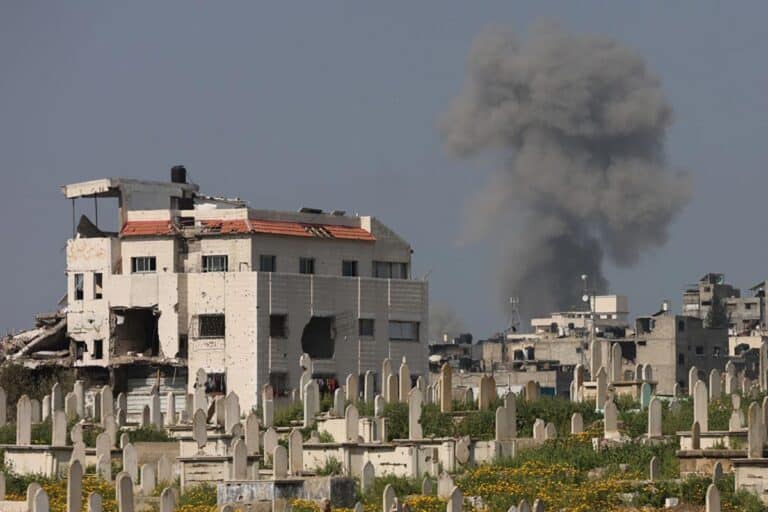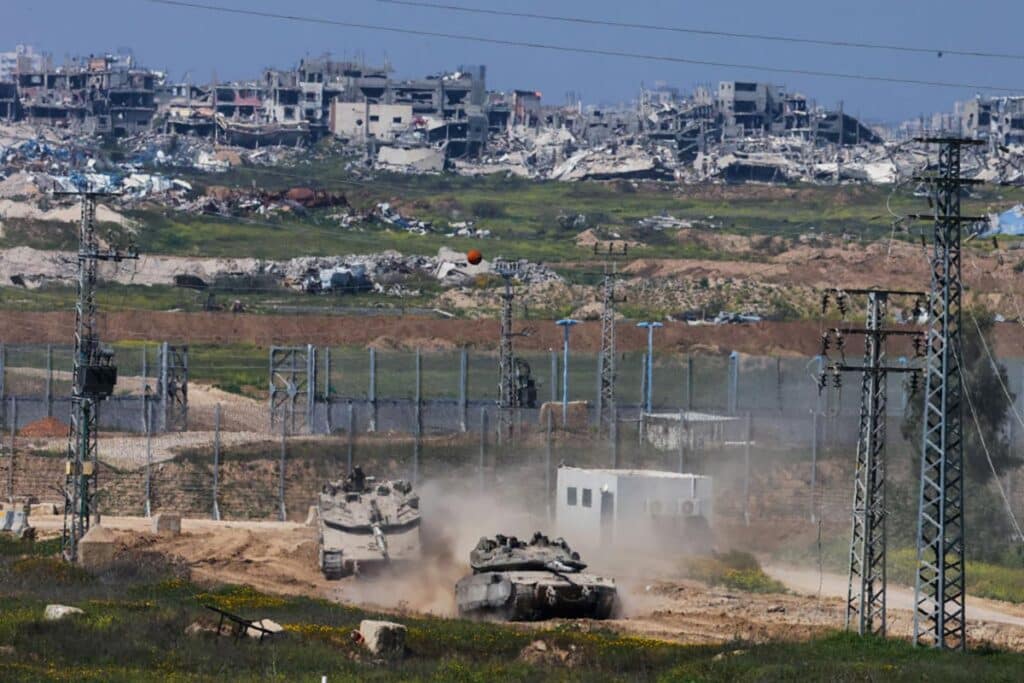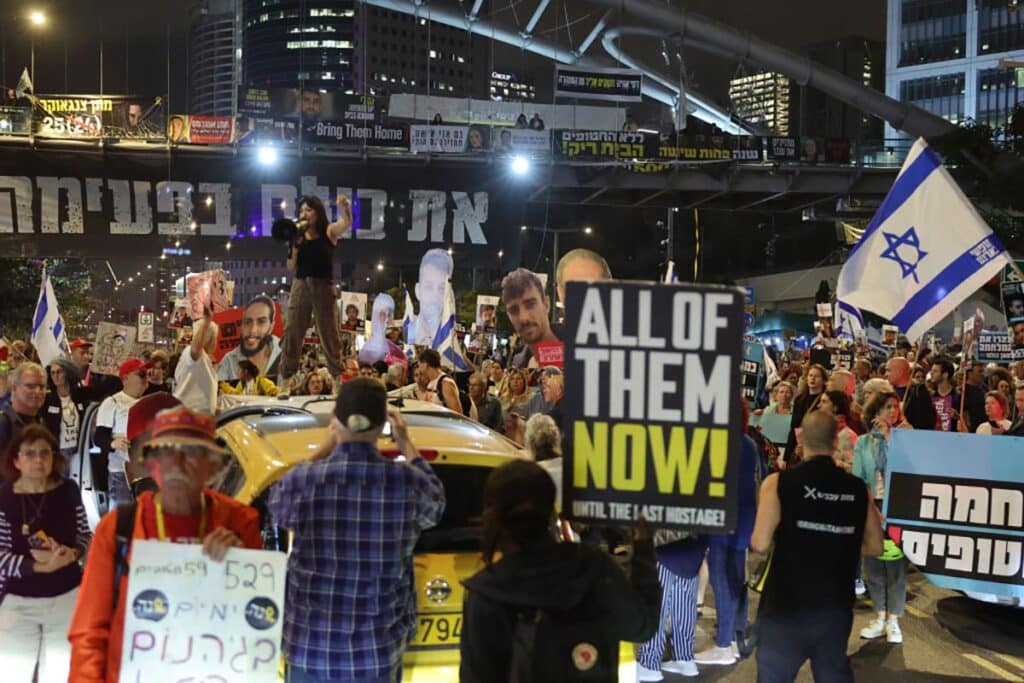
The IDF launched a wave of airstrikes in Gaza early Tuesday morning, renewing the war after negotiations between Israel and Hamas hit a dead end over the past two weeks.
How did we get here?
In mid-January, after 15 months of war, Israel and Hamas agreed to a ceasefire and a hostage release deal. The agreement saw the release of 33 hostages in exchange for a six-week ceasefire and the release of hundreds of Palestinian security prisoners.
Negotiations were set to begin in the middle of the ceasefire concerning a second phase of the deal, which would have seen the end of the war and the release of the remaining hostages, but those talks never began.
As of the end of the six-week ceasefire, Hamas was still holding 59 hostages, including 24 who are believed to be still alive.
Toward the end of the six weeks, Israel began pushing for an agreement to extend the first phase of the ceasefire instead of beginning the second phase. The deal would have released some of the hostages in exchange for a continued ceasefire and the release of additional Palestinian prisoners.
Hamas rejected this proposal and a similar proposal presented by the United States, insisting on an agreement that would lead to a complete end to the war and the withdrawal of Israeli forces from Gaza. Israel refused to consider this option.
With both sides refusing to budge, negotiations reached a complete standstill over the past two weeks.
The decision to renew the war
In light of the standstill in negotiations, Israel decided on Tuesday morning to return to fighting. The decision also came after Israeli media reported that Hamas was rebuilding its capabilities and preparing to launch new attacks against Israel.

A wave of airstrikes was launched against targets across the Gaza Strip early Tuesday morning, with Palestinian media claiming that over 400 people had been killed in the strikes as of Tuesday afternoon.
As of Tuesday, the IDF was refraining from sending large numbers of ground troops into Gaza, instead focusing on striking targets from the air. The airstrikes targeted Hamas’ military infrastructure and senior Hamas leaders, including officials in Hamas’ Justice and Interior ministries.
Israeli officials warned that a ground invasion could be launched if Hamas refused to agree to release more hostages. The IDF issued evacuation orders for areas within Gaza near the border with Israel, warning residents, “The IDF has launched a massive offensive against terrorist organizations. These designated areas are considered dangerous combat zones!”
On Wednesday afternoon, the IDF announced that it had launched a limited ground operation aimed at expanding the buffer zone near the Gaza border. The operation also involved entering the Netzarim Corridor, which cuts Gaza in half, in order to block traffic going northward.
Sources in the political echelon told KAN that the strikes in Gaza were meant to pressure Hamas to agree to release more hostages. However, sources in the defense establishment expressed doubts that this plan would work.
The Saudi Al-Arabiya network reported Tuesday that mediators were rushing to arrange an agreement that would see the release of several hostages in return for an immediate renewal of the ceasefire.
An Israeli official told CNN that the renewed operation in Gaza could end if Hamas agrees to release more hostages. As long as Hamas refuses to do so, the operation will gradually escalate.
White House press secretary Karoline Leavitt told Fox News Tuesday that Israel consulted with the U.S. before launching the renewed operation in Gaza.
“As President Trump has made it clear — Hamas, the Houthis, Iran, all those who seek to terrorize not just Israel, but also the United States of America, will see a price to pay. All hell will break loose,” Leavitt said.
Families of hostages express concerns fighting will endanger their loved ones
As the fighting resumed, the families of hostages still held in Gaza and those of released hostages expressed concerns about the fates of their loved ones.
Released hostage Liri Elbag warned, “What about those left behind? Again they’re forgotten. Again their lives are being played with. Again their lives are being put at risk instead of being saved. Again their hopes are being erased.”
“They are fighting to survive and it has already been for too long. I don’t know how long they can keep going! I write to you as one who was there, as one who knew them, as one who heard the voices, saw the expressions, and understood exactly what it means to stay behind. We cannot continue forward when they are there in hell. There are 59 hostages there! This isn’t a game!”
Released hostage Karina Ariev added, “I don’t know what is right to do, but I know for sure that the cries of my brothers who are still in hell echo in my ears. I see before my eyes the frightened and helpless look in their eyes. I feel like I am still there, my heart broken and shattered.”
Released hostage Emily Damari also conveyed her concerns, saying “My heart is broken, shattered, and disappointed. Gali, Zivi, and the rest of the hostages, we will continue to fight without pausing and do everything to bring you back.”

Herut Nimrodi, the mother of Tamir Nimrodi who is still held by Hamas, expressed despair at the situation. “It seems that the kidnapped will not return alive, but in coffins, and that is if they find anything there. If Tamir is alive, is he alone? And if not, is there a chance of finding him?”
“I ask myself if the goal [of the operation] is to rescue the hostages or the government,” Nimrodi told KAN Reshet Bet radio. “The returned hostages who post a heart again are essentially saying that there is nothing left to say.”
Sources in the Israeli defense establishment stressed in statements to the media that “The number one goal in the renewal of fighting is the return of the hostages. Protecting the lives of the hostages in Gaza is our top priority.”
“Any place where there is even a small chance that a hostage would be harmed — we do not attack there; that is the number one consideration. The safety of the hostages — is above all,” added the sources.
Renewal of fighting sparks widespread condemnations
The renewal of the fighting in Gaza drew widespread condemnation from around the world.
U.N. High Commissioner for Human Rights Volker Turk condemned the strikes, saying “This will add tragedy onto tragedy. This nightmare must end immediately.”
“The hostages must be released immediately and unconditionally. All those arbitrarily detained must be released immediately and unconditionally. The war must end permanently,” Türk said. “We urge all parties with influence to do all in their power to achieve peace and avoid further suffering of civilians.”
Jordanian Foreign Minister Sufian Qudah deemed the airstrikes “an assault on humanity itself,” urging a return to the ceasefire.
The French Foreign Ministry condemned the strikes as well, calling for an immediate cessation of hostilities.
“All parties must return to respecting the ceasefire in its entirety and engage in good faith negotiations to ensure its long-term viability,” the ministry said.
Tensions rise with Yemen and Iran simultaneously
Alongside the renewal of fighting in Gaza, tensions were also rapidly rising between the U.S. and Iran.
Last week, the Iran-backed Houthi militia in Yemen announced that it would renew attacks on ships in the Red Sea in response to Israel’s decision to restrict the entry of humanitarian aid into Gaza.
Throughout the war, the Houthis launched missiles and drones at Israel and ships in the Red Sea, putting an almost complete halt to trade through the important shipping route, and forcing ships to take the long route around Africa to get to the Middle East and Asia.
Shortly after the ceasefire was reached in January, the Houthis announced that they would halt their attacks, but the attacks were renewed this past week as negotiations remained stuck.
In response to the Houthis’ announcement, the U.S. launched airstrikes on Houthi targets in Yemen on Saturday. U.S. airstrikes on Yemen continued in the following days, and American officials warned that the strikes would continue until the Houthis stopped their attacks.
CENTCOM operations against Iran-backed Houthis continue… pic.twitter.com/DYvc3gREN8
— U.S. Central Command (@CENTCOM) March 15, 2025
U.S. President Donald Trump warned on Saturday that “The Houthi attack on American vessels will not be tolerated” and that America would use “overwhelming lethal force” until the Houthis surrendered.
Trump additionally warned on Monday that Iran would be held responsible and would “suffer the consequences” for any further Houthi attacks.
U.S. Special Envoy to the Middle East Steve Witkoff warned Hamas to take note of the U.S. strikes in Yemen, saying, “What happened with our strike ought to inform as to where we stand with regard to terrorism and our tolerance level for terrorist actions. I would encourage Hamas to get much more sensible than how they have been.”
Additionally, the Iranian Nour News outlet reported on Monday that Iranian F-14 fighter jets and drones intercepted a U.S. reconnaissance drone, forcing the drone to leave Iranian airspace.
Iran’s Islamic Revolutionary Guard Corps (IRGC) Aerospace Force told Nour News that “Iran will shoot down any enemy aircraft that enters Iranian airspace, whether manned or unmanned. We warn the enemy against any provocation.”
Shortly before the report by Nour News, a U.S. Navy reconnaissance drone was spotted circling off the coast near Bushehr, Iran. One of Iran’s nuclear facilities is located in Bushehr.
On Tuesday evening, sirens sounded in southern Israel after the Houthis launched a missile toward the country from Yemen. The missile was intercepted before it crossed into Israeli territory.
Originally Published Mar 19, 2025 10:10AM EDT

